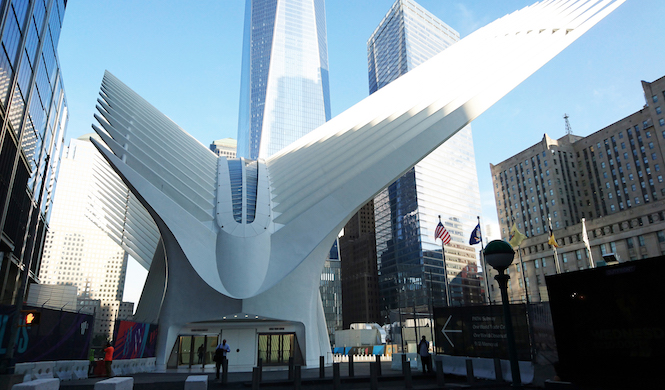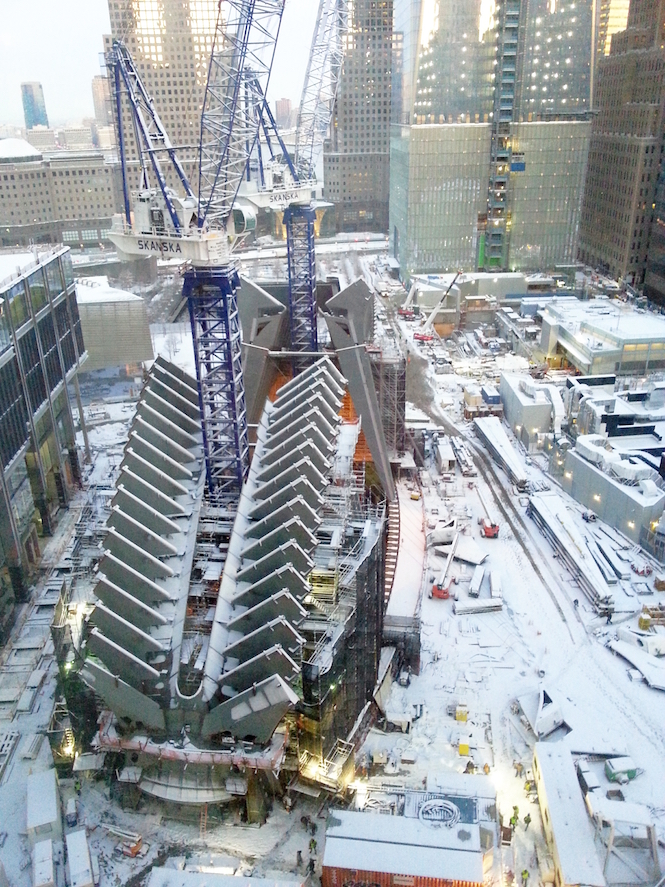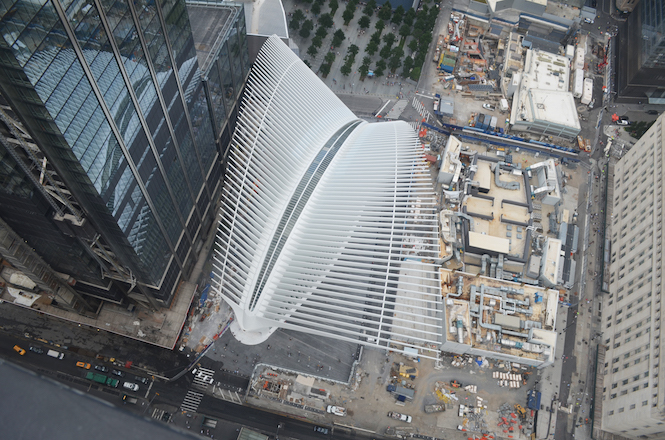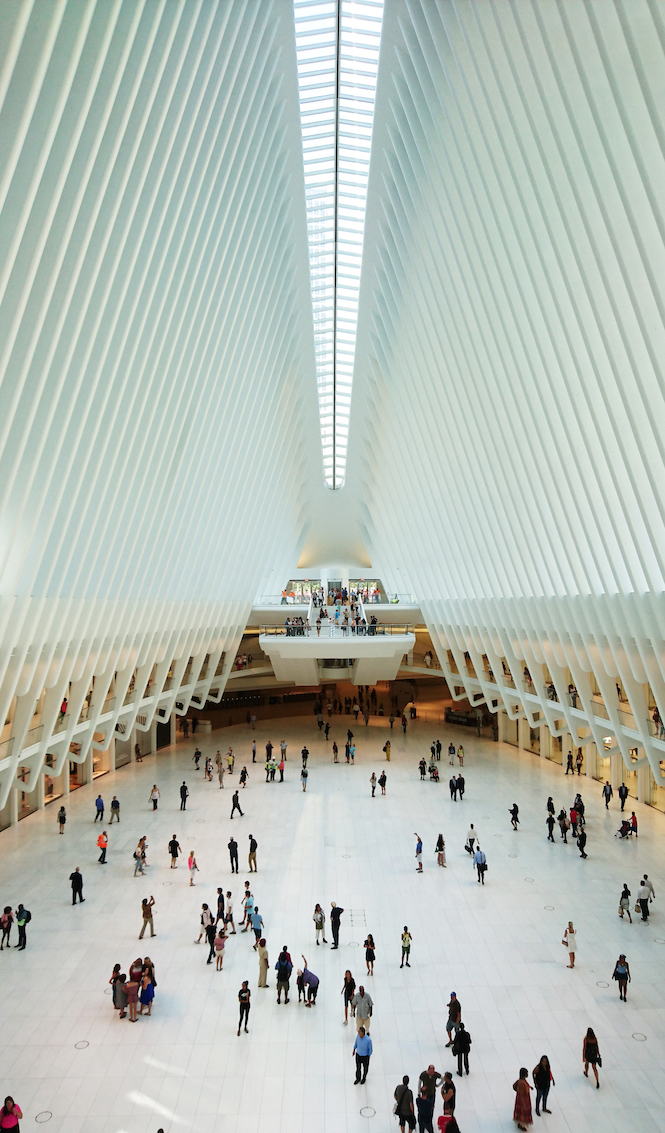
The World Trade Center Transportation Hub (Oculus) – 2017 Ambassador Award
December 13, 2017
By
Doug Picklyk
From the October/November 2017 print issue of Canadian Consulting Engineer, p. 29

The World Trade Center Transportation Hub (Oculus) in New York City is striking in its architecture, and it was extremely complicated to build. The project pushed the boundaries of structural engineering and required innovative construction solutions.
Skanska (the contractor) approached COWI North America (formerly Buckland and Taylor) and collectively they concluded that applying bridge engineering concepts and first principles was the ideal approach to erecting Oculus.

Erection Engineering
As erection engineers, COWI NA worked closely with the contractor, owner and design team to introduce innovative applications to improve the erection schedule, including:
Segmental Construction: A free cantilever segmental erection scheme allowed the contractor to reduce the amount of falsework, and provided for geometry adjustments as needed. Starting at both ends (abutments) of the building, long steel columns were lifted into place by crane; arch segments were then installed and attached on top—one in front of the other—until the arches finally met at its peak in the centre. After installation of each arch segment, COWI NA and Skanska surveyed and assessed the as-built geometry. This procedure ultimately saved both time and money, and reduced risks associated with the intricate design and glazing tolerances required.
Computer Analysis Model: The finite element (FE) analysis model created for the project was essential to the segmental erection scheme. To allow the glazing to fit properly, the final position of the steel in the arch and the columns had to be within ± ½-inch of the theoretical design location, including both fabrication and erection tolerances.
COWI NA used the FE analysis model to determine the cambered shape of each individual steel segment, and to compute the stresses in the structure and the position of the geometry control points during each stage of the erection. From the FE analysis model, COWI NA prepared a geometry control spreadsheet that provided target coordinates to the surveyors as each steel segment was maneuvered into place. The FE analysis model helped define the erection sequence, maintain tolerances, achieve schedule, and reduce costs.
 Tight workspace
Tight workspace
Located at the heart of the World Trade Center, the construction site for Oculus was very constrained. COWI NA looked at solutions on how to reduce the number of steel components stored onsite. An erection schedule was developed for faster installation of the long steel columns and improved installation from two to four free-standing columns without the connecting arch segments. These innovations reduced the storage requirements, optimized the erection sequence, and accelerated the schedule.
 The extensive use of glass and the tight tolerances of the steel structure enhanced the complexity. The project team identified that significant risks were associated with field welding (cost, time, and weld shrinkage distortions). COWI NA helped mitigate these risks by replacing welded splices in the arches with bolted connections. This solution drastically reduced the erection schedule, made it easier for the contractor, and helped achieve the desired geometry.
The extensive use of glass and the tight tolerances of the steel structure enhanced the complexity. The project team identified that significant risks were associated with field welding (cost, time, and weld shrinkage distortions). COWI NA helped mitigate these risks by replacing welded splices in the arches with bolted connections. This solution drastically reduced the erection schedule, made it easier for the contractor, and helped achieve the desired geometry.
This challenging and complex structure required innovation, and the Oculus is an example of the successful application of a traditional bridge erection engineering technique in building construction.
World Trade Center Transportation Hub (Oculus), New York
- Award winning firm: COWI North America (Darryl Matson, P.Eng.; Nedim Alca, P.Eng.; Tobias Petschke, P.Eng.; Joe Viola, P.E.; Genaro Velez P.E.; Alex Yee, P.E.; Tom Surtees, P.Eng.; Charles King, P.Eng.)
- Owner: Port Authority of New York and New Jersey (PANYNJ)
- Client/contractor: Skanska USA
- Other key player: RWDI (wind load assessment)
